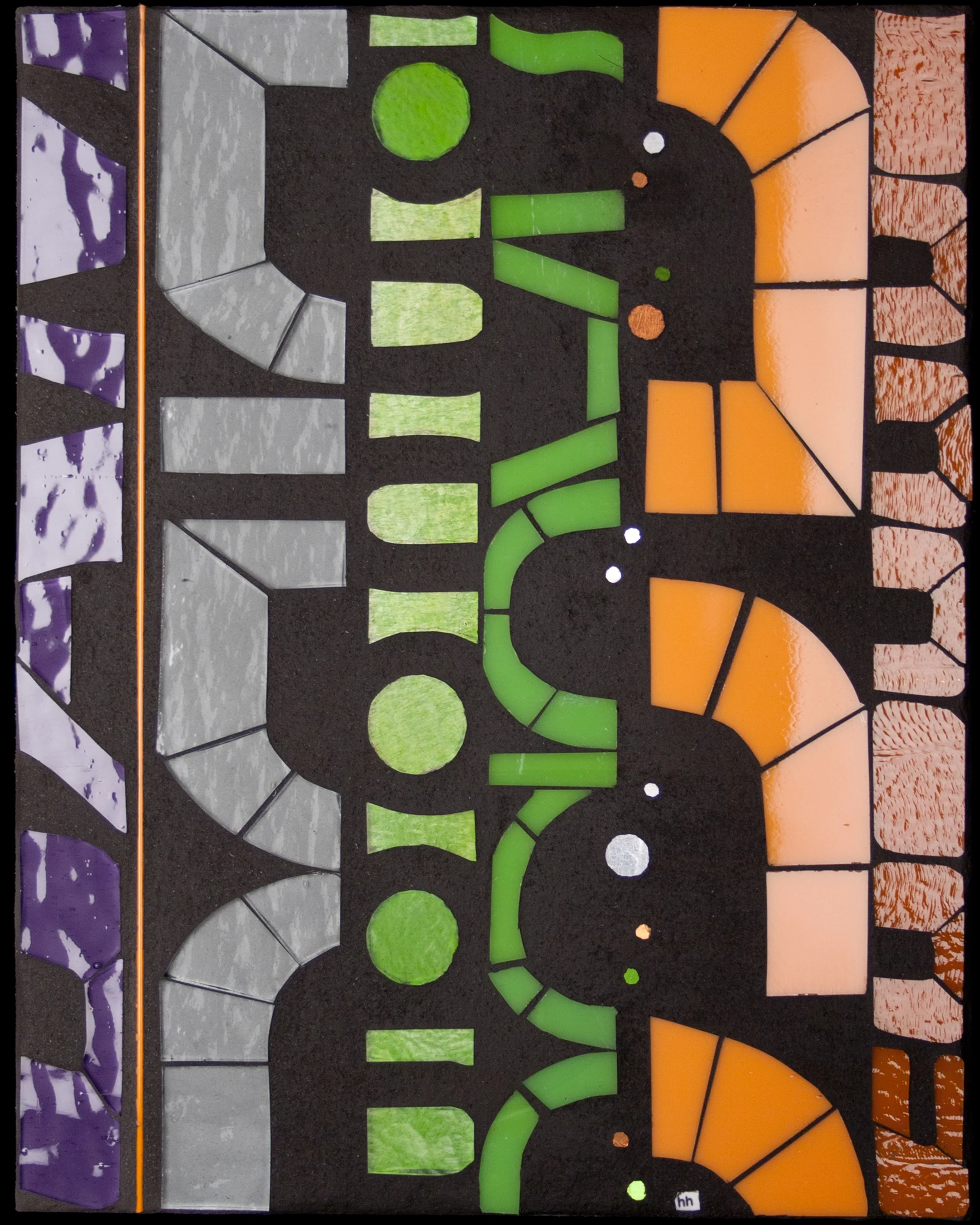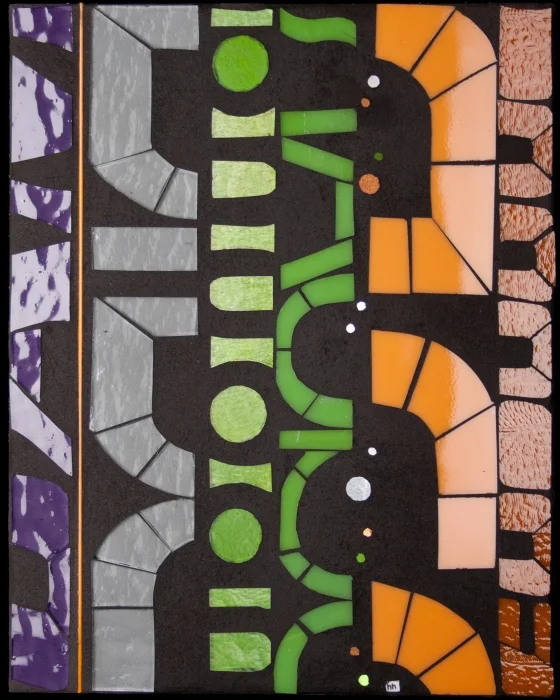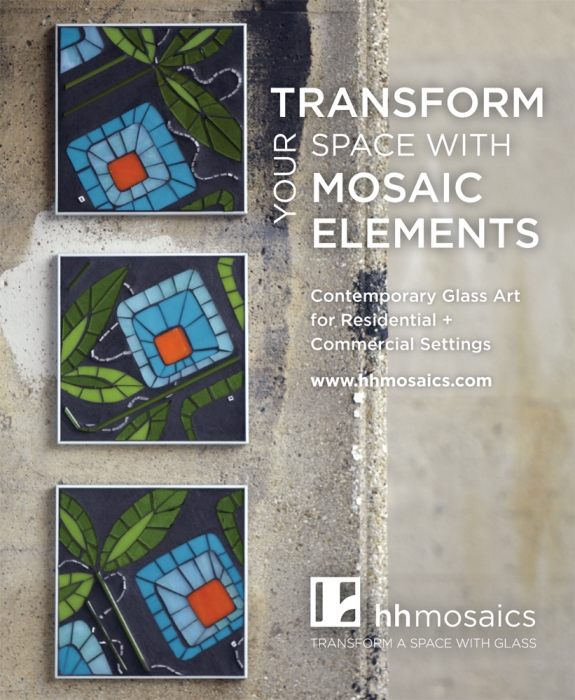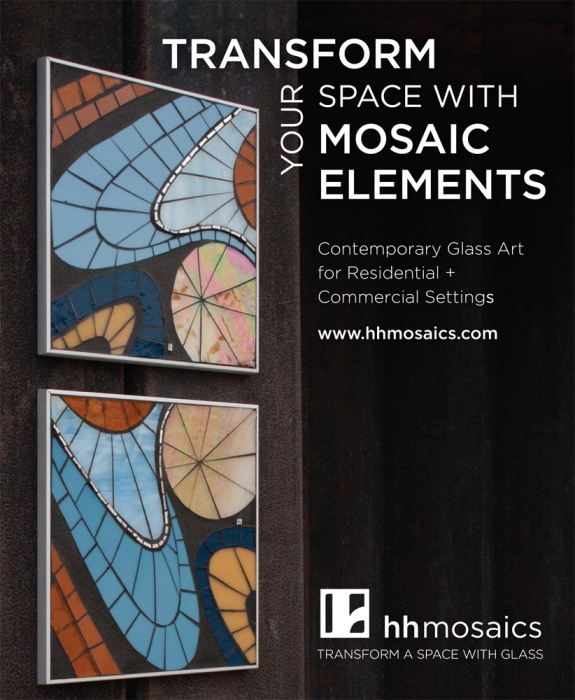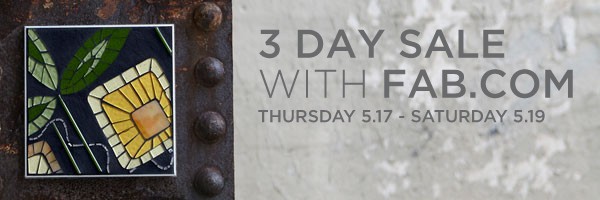I have been developing prototypes in a new series Scan over the past couple months.
 I first started work on Scan in 2009. I had recently transitioned to using sheet glass and could envision a series of scrolling abstracted letter forms. As a speech language pathologist, I have a longstanding interest in language and cognition. Letter forms are inherently engaging to our pattern-detecting, information-decoding minds. With Scan, the viewer is enticed to decipher the abstracted letter forms. Using unfamiliar product names from construction materials reduces the contextual linguistic information to the point where decoding is impossible. Selective attention is activated to find pattern in the randomness. A seemingly simple act of reading is transformed into a cognitively demanding visual puzzle. In this way, the viewing experience points to that of the many people I encountered in clinical practice.
I first started work on Scan in 2009. I had recently transitioned to using sheet glass and could envision a series of scrolling abstracted letter forms. As a speech language pathologist, I have a longstanding interest in language and cognition. Letter forms are inherently engaging to our pattern-detecting, information-decoding minds. With Scan, the viewer is enticed to decipher the abstracted letter forms. Using unfamiliar product names from construction materials reduces the contextual linguistic information to the point where decoding is impossible. Selective attention is activated to find pattern in the randomness. A seemingly simple act of reading is transformed into a cognitively demanding visual puzzle. In this way, the viewing experience points to that of the many people I encountered in clinical practice.
The first prototype of Scan was ungrouted glass on a painted background. The cutting was completely unfamiliar with radically new forms and shapes. I struggled to find a rhythm and ended up setting the piece aside, unfinished, and moving on to other projects.
Two things happened to bring me back to Scan this year. First, I started photographing labels from construction materials found around the studio and in my Home Depot wanderings. As I explored these images, I realized that the graphic retro fonts were perfect for Scan. The forms are solid, like building blocks and cropping these letters created lovely rounded, almost organic shapes.
Second. I read James Gleick's The Information. I am fascinated by effective information exchange between speaker and listener; that is, of the highly contextualized and personally relevant message. Gleick explores the history of information, information as message (the calculable point between randomness and pattern) and information systems and control. The centrality of information to technology and human life itself, shaping our daily lives and conscious moments renewed my interest in Scan as a visual exploration of information filtering and decoding.
